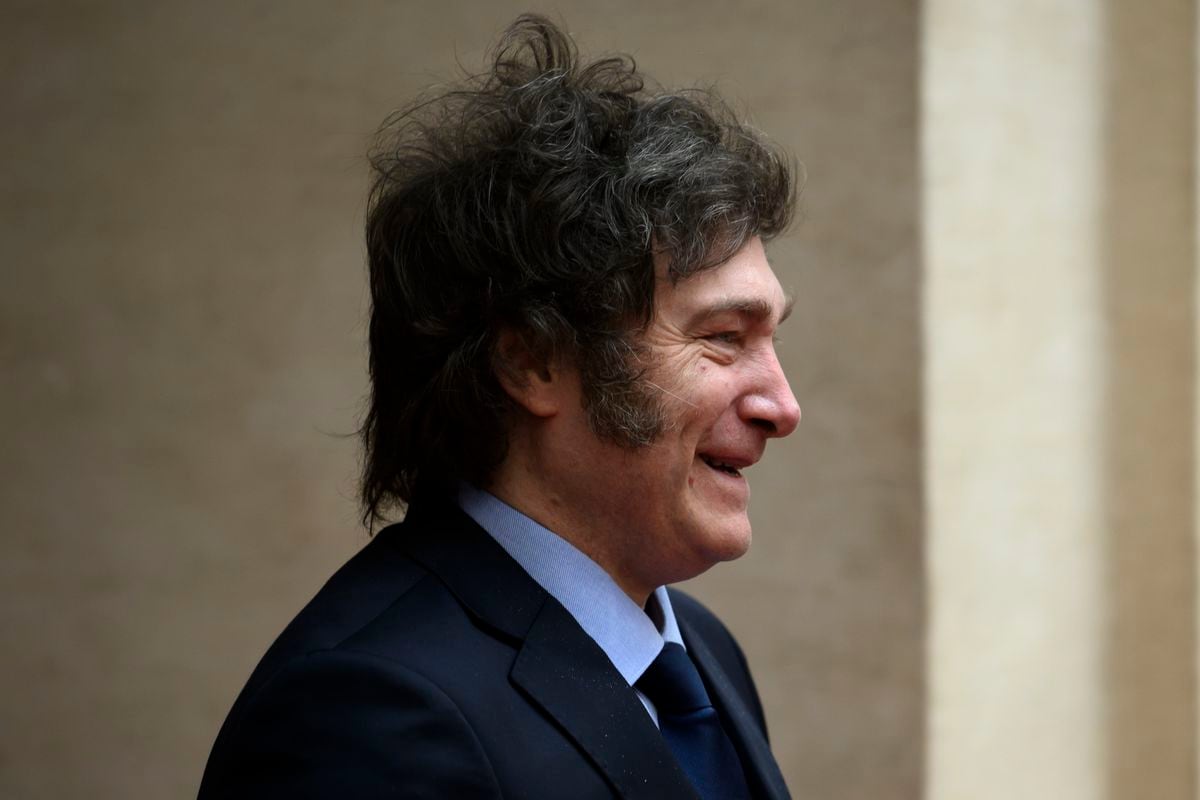10 unique things about Argentina 1:58
(CNN Spanish) --
The cultural, natural and historical wealth of Argentina is inexhaustible.
From its great landscapes to personalities who have won worldwide recognition, the nation is vastly diverse.
On the occasion of the 205th anniversary of the Independence of Argentina, which was signed on July 9, 1816, we remember 10 things that make Argentines unique.
1. Tango
Tango World Championship in Buenos Aires in 2014. (DANIEL GARCIA/AFP via Getty Images)
Let's start with the obvious: tango.
The typical dance was recognized in 2009 as Intangible Cultural Heritage of Humanity by UNESCO.
"The Argentine and Uruguayan tradition of tango, today known throughout the world, was born in the Río de la Plata basin, among the popular classes of the cities of Buenos Aires and Montevideo", details UNESCO.
2. The first Latin American pope
Francisco drinks mate in Saint Peter's Square in December 2014 (Credit: ALBERTO PIZZOLI/AFP/Getty Images)
The then Archbishop of Buenos Aires Jorge Bergoglio became in 2013 the first Jesuit pontiff and the Latin American in history.
advertising
"He is a leading figure throughout the continent and a simple and well-liked pastor in his diocese, who has visited far and wide, even traveling by means of public transport, in the fifteen years of episcopal ministry," the biography mentions. of Pope Francis on the Vatican page.
3. The porteño fileteado
Artist paints with the filleting technique in Buenos Aires.
(EITAN ABRAMOVICH/AFP via Getty Images)
In 2015, UNESCO recognized this traditional pictorial technique that constitutes "a form of collective memory" as Intangible Cultural Heritage of Humanity.
"The Buenos Aires fillet steak is a traditional pictorial technique that combines bright colors with specific typographic styles. Its creations can be seen on city buses, trucks, and store and warehouse signs, and are becoming more and more common in home decoration ", indicates UNESCO.
4. Los Glaciares National Park
Tourists in Los Glaciares National Park.
(WALTER DIAZ/AFP via Getty Images)
Due to its "exceptional natural beauty", UNESCO declared Los Glaciares National Park a World Heritage Site in 1981.
It is located in the Argentine province of Santa Cruz.
"Los Glaciares National Park is a site of exceptional natural beauty with impressive jagged peaks and numerous glacial lakes, such as Lago Argentino, which is 160 kilometers long. At the end of it, three glaciers converge, precipitating huge icebergs in its icy waters. milky gray, in the midst of a thunderous crash," says UNESCO.
5. Five Nobel Prize winners
Entrance of the Alfred Nobel Museum in Stockholm, Sweden.
(JONATHAN NACKSTRAND/AFP via Getty Images)
Argentina has two Nobel Peace Prize winners (Carlos Saavedra Lamas, winner in 1936; and Adolfo Pérez Esquivel, in 1980), two in Medicine (Bernardo Alberto Houssay, winner in 1947; and César Milstein, in 1984) and one in Chemistry ( Luis Federico Leloir, who won in 1970).
6. Name of 'silver'
The Pink House in Buenos Aires.
(Ricardo Ceppi/Getty Images)
Argentina comes from the Latin "argentum", which means silver, and which refers to the metals that the conquerors brought to Spain.
"We find its written record in the expression
Terra Argentea
included in a cartographic piece of the Portuguese Lopo Homen of 1554. There are reliable testimonies of the time that account for the association existing at that time between the territory and the Río de la Plata, but it is in 1602 that the appearance of a book would have to fix the denomination", explains the Argentine government.
7. "The Hand of God"
In this photo is the moment before Diego Maradona pushes the ball with his hand and scores the goal that he called 'The Hand of God'.
(Getty Images)
Argentine soccer legend Diego Armando Maradona and his "hand of God" marked the 1986 World Cup, in which Argentina was champion.
Diego scored 2 goals in a historic quarter-final performance against England.
That day the famous "Hand of God" was born.
8. The Mennonites of La Pampa
In the footsteps of the first Mennonite community in Argentina 2:36
An Argentine village lives without electricity, doesn't teach children biology or history, and speaks a dialect of Old German.
8. The widest avenue
Avenida 9 de Julio is also the scene of social protests.
(JUAN MABROMATA/AFP via Getty Images)
9 de Julio avenue in Buenos Aires is considered the widest in the world, with 140 meters.
According to the country's government, this traditional artery of the city honors the Declaration of Independence.
That's where his name comes from.
10. Radio pioneers
A sample of an old radio in Argentina.
(Photo: City Museum)
In 1920, Argentina was the first Latin American country to make a radio broadcast.
This was carried out from the Teatro Coliseo.
On August 27, it will be its 101st anniversary.
ArgentinaIndependence Day









/cloudfront-eu-central-1.images.arcpublishing.com/prisa/3XSX2WJX7FPLBAKOW6SDYFSOUM.jpg)